#berea college
Text
United Student Workers of Berea-CWA Announce Union Campaign at Berea College, Kentucky
A strong majority of Berea College students have already signed union authorization cards.
By Ameer Abedy and Ülvi Gitaliyev
On March 16th, United Student Workers of Berea (USWB), affiliated with the Communication Workers of America (CWA), announced their unionization campaign in Berea College. Berea College, a work college consortium, requires students to hold labor positions along with their academic duties. The aforementioned positions can range anywhere from manual labor, such as…

View On WordPress
#berea#berea college#Berea College Union#Berea Kentucky#Berea SGA#Berea Torch#Berea Union#United Student Workers of Berea#United Student Workers of Berea (USWB)#USWB#USWB-CWA
4 notes
·
View notes
Text
Free Appalachian Craft College

Hey Cottagecore and Crafty kids!
I really wish I'd known about this place back when I was applying for colleges.
Berea College in Kentucky charges students $0 for tuition. Before you freak out about it being in Kentucky, go google the town of Berea. It's an arts and crafts wet dream, with a delightful emphasis on the unique culture of Appalachia.
The college is somewhat selective. They accept about 1/3 of all applicants. It's also a small school (student body of 1500), with a 9:1 student:faculty ratio. Half the students are POC. 67% are first generation college students.
Their work-study program is mandatory for all students, but instead of federal minimum wage there are 6 pay grades, ranging from zero responsibility to manager. When you graduate you get a "work transcript" and references as well as your regular transcript. Oh, and a LOT of the available jobs are crafting and working with animals.
The City of Berea has a ton of craft festivals, and students are encouraged to set up booths and make money selling tourists their own hand made crafts.
Art for its own sake is wonderful, but they have an emphasis on Entrepreneurship, so you can learn how to actually manage a business in the arts.
It's a very different education from what you get at the usual [CityX] College of Art and Design. They love art for its own sake, but they also really want to teach you how to make a living (while also giving you a broad based general education.)
If you know a crafty kid who aspires to make and sell any kind of art for a living, this could be a good place to add to their stack of school applications.
4 notes
·
View notes
Text








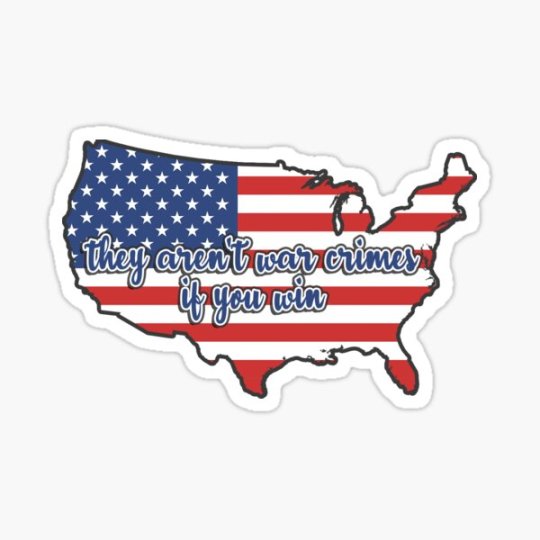

MORE DESIGNS ARE UP!
#redbubble#enchantedviolet#berea affirmations#berea#berea college#gender#gender non-denominational#nonbinary#mimimum wage#bi#bisexual#frog#frogs#kawaii#old man who fucks like a beast#invasive species#warning sign#the aren't war crimes if you win#america#united states#usa#immunity to yaoi hands#yaoi#i'm bisexual it's terminal#chin up buckaroo!#work in frogress#sticker#stickers#uhhh you can get it on like. mugs and shirts too
12 notes
·
View notes
Note
Hey, you made a post a while ago saying it was okay to ask questions about Berea College, and I had a couple if you don’t mind?
- the first being what the area is like for queer folk? I’ve vaguely heard some nice things about the school but. It’s in Kentucky. The bar is very low. I’m just wondering how safe it would be for me to come out, how the faculty would treat me, etc.
- there is zero info out there about the theatre program, really. Would you happen to know if the theatre equipment is in good shape, what kinds of shows are put on on campus, etc?
- I know that the acceptance rate is pretty low. It’s a little intimidating. What does the application process look like?
- what do you like most about campus? What do you dislike?
Sorry if this is a lot, don’t feel like you have to answer. Have a nice day :)
Hi! I am happy to answer!
Berea college has a high queer population and the college itself is super supportive. Even in the last year the college had been working to be even more inclusive with language, housing, and other things. Off campus is not as much as Madison county itself is republican but I haven’t heard many bad stories of things off campus.
I don’t know much about the theater program as it is not my major but I have many friends that are. From what I can tell, stuff is in good shape. I watched all of the shows last semester! The cast was incredible in all of them! The shows are well done and one was an incredible heart touching story while the other one was urinetown if you have ever heard of it! I would recommend the major from what I have heard about it.
The application process terrified me while I was applying but looking back on it, it really wasn’t. You will get an academic advisor who’s one goal is to fight to get you in. They take the time to get to know you and how to best present you to the admissions board. My best advice is to do all the stuff on the admissions page and to write about things you’ve overcome by yourself. If you have a pull yourself up by the bootstraps story, tell it.
Campus is so pretty (when they aren’t doing construction) there isn’t a whole lot to do but there are so many places to sit and enjoy. If you like hiking though, you’ll love Berea. The college owns so much land that they encourage us to hike. I haven’t hiked yet due to medical reasons, but I know many people who love it. The worst thing about Berea is your first year as you don’t get much freedom, but there is some good reasons for why. If you make it through that first year, you’ll be okay. Just remember to advocate for yourself and reach out when you need help!
I hope this helps! Have a great day!
1 note
·
View note
Text
"
It started with a few sentences in a book I was reading about the history of the Appalachian Mountains. The book briefly discussed Kentucky, before colonization, being covered with dense thickets called canebrakes, which mostly disappeared when settlers plowed and cleared the fertile bottomlands where they grew. “Cane,” the book claimed, was likely the origin of the name Kentucky—“Kain-tuck.”
“Cane” was just what the settlers called the tall, woody plant that dominated in canebrakes—the name refers to any of the three similar plant species belonging to the genus Arundinaria. In Kentucky, it was most likely A. gigantea, or giant river cane. Giant river cane has no relationship to plants like sugar cane, and are actually North America’s only native bamboo.
Bamboo? In Kentucky?
I recalled having seen some strangely bamboo-like plants in the area, including a large patch in an empty lot close to my house. My memory rushed back to several years ago, when my brother had been camping in a “bamboo forest” along a creek that bordered a farm. How strange, I had thought. Who would plant bamboo in the middle of nowhere like that?
Unless…it was native bamboo?"
0 notes
Text
Information Session: Learn More About Berea College
Do you have a child, grandchild, niece, nephew, cousin or other person in your life interested in attending college? Regardless of their current grade level, you are invited to come and hear about Berea College, what their school offers, and what students need to do to be ready to enter into higher education. Admissions Counselors from the campus will be present to answer any questions you have and to help you navigate the process.
0 notes
Text
just found out Berea College pulled their motto from Acts 17:26. total chad move, what a baller institution
#cheat sheet: it's the bit about God Has Made Of One Blood All Peoples Of The Earth#(berea was the first integrated college in the US south)#(also it's tuition-free to everyone who gets in. badass institution I Stan The Good Kentucky Things)
6 notes
·
View notes
Text
why am i getting an ad for university of kentucky guys its actually really scary
#1. i would never go to uk 2. if i was gonna go to a college with kentucky in its name itd be eku 3. if i was gonna go to a college in ky#itd be berea college 4. im not going to college brother im a highschool dropout !#oh and 5 i live in wa LOL
2 notes
·
View notes
Text
Berea College Free Tuition Scholarship for International Students 2023
Berea College Free Tuition Scholarship for International Students 2023
Applications are hereby invited from interested and outstanding international students for Berea College Free Tuition Fee Scholarship. Berea College offers a high-quality education to academically promising students with limited economic resources. (more…)

View On WordPress
0 notes
Text
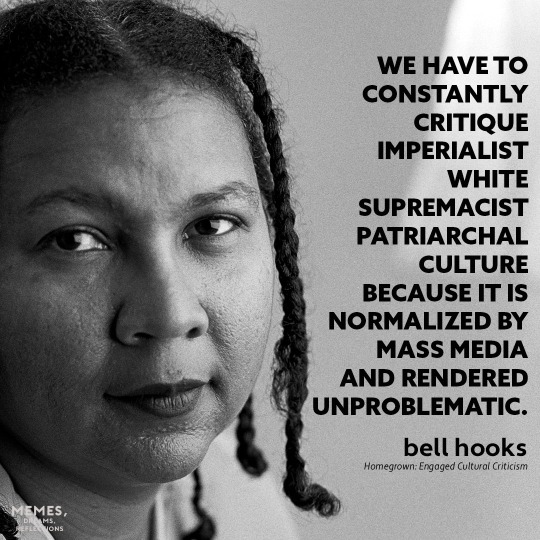
Gloria Jean Watkins (September 25, 1952 – December 15, 2021), better known by her pen name bell hooks, was an American author, theorist, educator, and social critic who was a Distinguished Professor in Residence at Berea College. She is best known for her writings on race, feminism, and class.
156 notes
·
View notes
Text
“To be Neutral is Cowardice”: How The Berea Community Has Been Fighting for Justice in Palestine Since October 7th
By Ülvi Gitaliyev
On October 7th, the Berea College community awoke to news of another war in Palestine. Many were shocked and appalled at the death and destruction on a scale not seen in decades. Immediately, students, faculty and staff began to organize events, protests, and other actions to voice their support for Palestine.
The first event related to Palestine was a Q&A and info session on…

View On WordPress
#berea#berea college#Jamal Rajeh#Jimmy Rajeh#Palestine#Palestine in Berea#Palestine in Kentucky#Salaam Nahasi
3 notes
·
View notes
Text

Today In History
Dr. Carter Godwin Woodson, was born in New Canton, VA, on this date December 19, 1875. Woodson had worked as a sharecropper, miner and various other jobs during his childhood to help support his large family. Though he entered high school late, he made up for lost time, graduating in less than two years. After attending Berea College in Kentucky, Woodson worked in the Philippines as an education superintendent for the U.S. government. He earned his bachelor’s and master’s degrees at the University of Chicago before entering Harvard. In 1912, three years before founding the ASNLH (Association for the Study of Negro Life and History).
Dr. Carter G. Woodson became the second African American to receive a doctorate from Harvard University after W.E.B. Du Bois.
Woodson believed that young African Americans in the early 20th century were not being taught enough of their own heritage, and the achievements of their ancestors. In 1921 Woodson started his own publication the Associated Publishers Press and housed it at his row house on Ninth Street in Washington D.C. He then turned to his fraternity, Omega Psi Phi, who helped create Negro History and Literature Week in 1924.
In February 1926, Woodson sent out a press release announcing the first Negro History Week. As early as the 1940s, efforts began to expand the week of public celebration of African American heritage and achievements into a longer event. In 1976, on the 50th anniversary of the first Negro History Week, the Association officially made the shift to Black History Month.
Woodson dedicated his career to the field of African American history and lobbied extensively to establish Black History Month as a nationwide institution. He wrote many historical works, including the 1933 book The Mis-Education of the Negro.
We honor Dr. Carter G. Woodson legacy through CARTER™️ Magazine, extending his vision for making African American history available for everyone 365 days a year.
CARTER™️ Magazine
#carter magazine#carter#historyandhiphop365#wherehistoryandhiphopmeet#history#cartermagazine#today in history#staywoke#blackhistory#blackhistorymonth#dr carter g woodson#carter g woodson
90 notes
·
View notes
Text
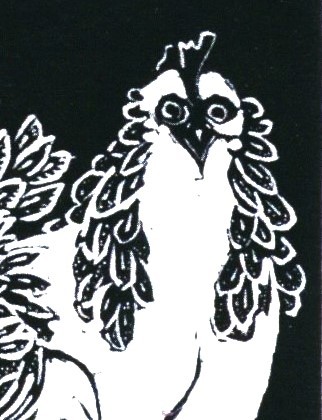

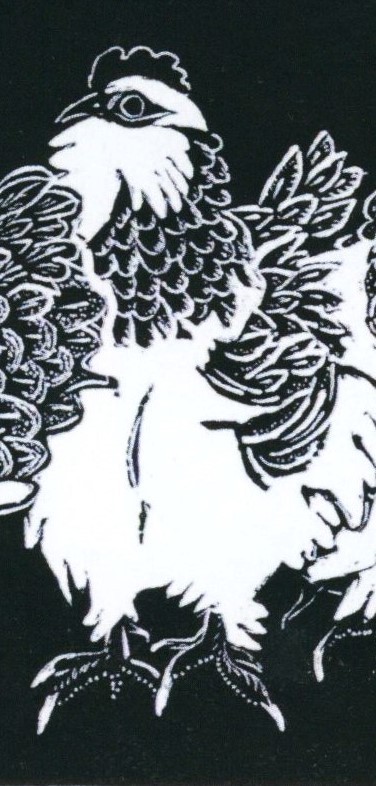

A Wood-engraved Feathursday
MORE CHICKENS!!
One can never have enough chickens. Today's flock is from a wood engraving by Kentucky potter and engraver Gwen Heffner (1952-2021) entitled Three French Hens from the catalog of the Fourth Triennial Exhibition 2020-2022 of the American American wood engravers society, the Wood Engravers’ Network (WEN). We love how Heffner captures the goofy, maniacal look that chickens often have.
Gwen Heffner received her BA degree in printmaking and ceramics from Luther College in Iowa and her graduate degree in ceramics from the University of Louisville, and she maintained a pottery outside Irvine, Kentucky. Heffner worked as an artist for school systems in her state and had long associations with the Contemporary Artifacts Gallery and the Kentucky Artisan Center, both in Berea, Kentucky. Unfortunately, Heffner passed away before this catalog was printed. We are pleased to share her print with you.

View more Feathursday posts.
View other posts with engravings from the WEN Fourth Triennial Exhibition.
View more engravings by members of the Wood Engraver’s Network.
View more posts with wood engravings!
View more posts with CHICKENS!!
#Feathursday#wood engravings#wood engravers#women wood engravers#Gwen Heffner#Three French Hens#Chickens#Chickens!!#Wood Engravers' Network#WEN#WEN Fourth Triennial Exhibition#exhibitions#exhibition catalogs#birds#birbs!
35 notes
·
View notes
Text
Walter Franklin Anderson
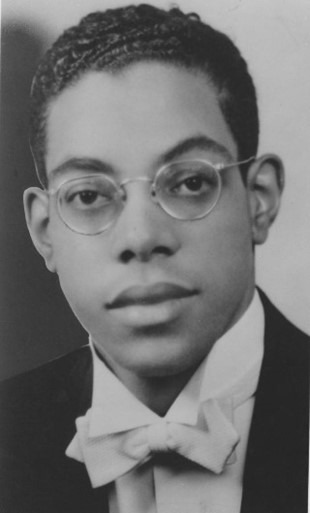
The grandson of formerly enslaved people, Walter Franklin Anderson, classical pianist, organist, composer, jazz musician, community activist, and academician, was born on May 12, 1915, in segregated Zanesville, Ohio. Walter was the sixth of nine children of humble beginnings.
Information regarding his parents is not available. Anderson, a child prodigy, began piano studies at age seven, and by 12, he was playing piano and organ professionally while still in elementary school. He was the only Black student to graduate from William D. Lash High School in Zanesville in 1932. Although a talented musician, Anderson was not a member of any of the school’s music ensembles, including the Glee Club or orchestra. Afterward, he enrolled in the Oberlin Conservatory of Music in Oberlin, Ohio, 100 miles north of his hometown, and received a Bachelor of Music in piano and organ in 1936. Anderson continued his studies at Berkshire (Tanglewood, the summer home of the Boston Symphony Orchestra) and the Cleveland Institute of Music in Cleveland, Ohio.
From 1939 to 1942, Anderson taught Applied Piano, Voice Pedagogy, and music theory at the Kentucky State College for Negroes (now Kentucky State University) in Frankfort. In 1943, Anderson married Dorothy Eleanor Ross (Cheeks) from Atlanta, Georgia. They parented two children, Sandra Elaine Anderson Mastin and David Ross Anderson, before the marriage ended in a divorce in 1945.
In 1946, Anderson was appointed the head of the music department at Antioch College in Yellow Springs, Ohio, thus becoming the first African American named to chair a department outside of the nation’s historically black colleges. Two years later, Anderson was a Rosenwald Fellow in composition from 1948 to 1949, where his variations on the Negro Spiritual, “Lord, Lord, Lord,” was performed by the Cleveland Orchestra. Moreover, John Sebastian, the conductor of the Orchestra, commissioned him to write “Concerto for Harmonica and Orchestra” for a performance with the same orchestra. In 1950, Anderson’s composition, “D-Day Prayer Cantata,” for the sixth anniversary of the World War II invasion, was performed on a national CBS telecast. In 1952, Anderson received the equivalent of a doctoral degree as a fellow of the American Guild of Organists. He left his administrative post at Antioch College in 1965.
In 1969, Anderson was named director of music programs at the National Endowment for the Arts, where he created model funding guidelines and pioneered the concept of the challenge grant. In addition, he spearheaded numerous projects and developed ideas at the then-new agency for supporting music creation and performance, specifically for orchestras, operas, jazz, and choral ensembles and conservatories.
Anderson was the recipient of four honorary doctorates in music over his professional career, including one from Berea College in Berea, Kentucky, in 1970. He retired from NEA in 1983. During this period, he became a presidential fellow at the Aspen Institute for Humanistic Studies and a recipient of the Cleveland Arts Prize for Distinguished Service to the Arts. In 1993, the American Symphony Orchestra League recognized Anderson as one of 50 people whose talents and efforts significantly touched the lives of numerous musicians and orchestras. He was also a member of the Advisory Council to the Institute of the Black World at the Martin Luther King, Jr. Memorial Center.
https://www.blackpast.org/african-american-history/people-african-american-history/walter-franklin-anderson-1915-2003/
25 notes
·
View notes
Text
So I was grabbed hold of by my music hyperfixation today and it turned out, today's the day I learn more about the history of American music as made by African Americans. Since, you know, they did most of it.
I've known for a long time that American music has deep roots in Black experiences and culture, but it was always such a behemoth of genres and artists that I didn't know what exactly I liked or where to start.
So, today, I figured I'd do what I do best and start with all of it at once.
Okay, not exactly. I'm doing it in chronological order. But in order to accurately order the shitload of playlists and folders I was making on Spotify, I needed to know what order those genres were discovered in.
I am not in school for this, I'm not educated on this and, as a white person, I don't feel like I have the nuance, experience, or understanding to properly write a massive post about this topic, but I did want to share a few articles I've read today, because they were extremely well-written (as far as I can tell), informative, and moving.
Reasons to Read These
African Americans have been the driving force in just about every music genre that's come out of America. If you don't already know that, or want to know more, you should read these.
Do you find music and musical evolution fascinating? You should read these.
Are you queer? Disco is part of queer culture as well and the overlap between Black and queer culture in that time period leans heavily on disco, which is fascinating and part of your own history. You should read these.
If you care about racial tensions in the US, the article that talks about Earth, Wind, & Fire goes into the ways disco impacted racial tensions in the US in the late 70s. It's good knowledge to have under your belt. You should read these.
Bonus shout out to The Get Down on Netflix. I watched this a year or two ago and was obsessed with it for a few days until the fixation passed. This is part of the driving inspiration for me looking into the history of disco and hip-hop so extensively today, because the vibes in the show were just... enrapturing. And, looking at the Wikipedia page for it to double check how it was received by people who know more than me, it does seem to have good reception. I especially like that they involved historical pioneers in its creation (DJ Grandmaster Flash, who invented modern use of turntables for hip-hop, DJ Kool Herc, and Kurtis Blow, all in their 60s and part of the original hip-hop scene in the Bronx). So if you want to watch something that will get you hyped about disco and hip-hop, I can just about promise you that'll do it. Needless to say, I will be rewatching it very soon.
Long but detailed and very well written. Has many artist suggestions:
A shorter summary for someone who wants a quick read:
I hope some of you will click through and learn something with me today c:
#music#history#music history#jazz#disco#hip hop#rap#queer#queer history#black history#blm#black music#black music history#earth wind and fire#african american music#racism mention
14 notes
·
View notes
Text
MOGAI BHM- Day 1!
Happy BHM! To celebrate the first day of Black History Month, I figured I’d make my first post about the history of BHM itself! i highly recommend you read the whole post, but if you do genuinely struggle with reading very long posts, I will have a summary/conclusion at the end!
Carter G. Woodson-
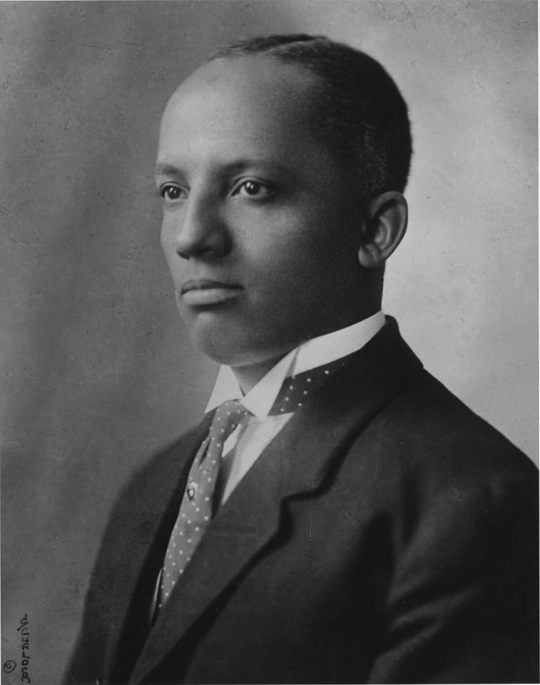
[Image ID: A black-and-white, portrait-style photograph of Carter G. Woodson. He is thin, Black with a medium-dark skin tone, and is wearing a black suit jacket over a white button-up collared shirt with a necktie that is grey with small white polka dots. He is wearing his hair in corn rows, and has a somewhat solemn expression on his face. End ID.]
The history of Black History Month would be entirely incomplete without discussing Carter G. Woodson! Woodson never in his lifetime got to see official establishments and celebrations of BHM, but he is nevertheless integral to its history.
Carter G. Woodson was born in 1875. Growing up, he was quite poor, and his schooling was very limited- he was mostly self taught. He taught himself basic subjects, and he graduated from high school only two years after entering. He worked in West Virginian coal mines to earn additional income for his family.
From an early age, Woodson was interested in teaching and history. Before getting his bachelors degree in literature from Kentucky’s Berea College, he worked as both a teacher and a school principal, and after graduating with his bachelor’s degree, he went on to travel Europe and Asia before returning to America to earn a master’s degree from the University of Chicago, and he then became the second Black American to ever attend and graduate from Harvard University. Eventually, he became the Dean of the College of Arts and Sciences at Howard University, an HBCU!
The ASNLH, ‘N*gro History Week’, And More
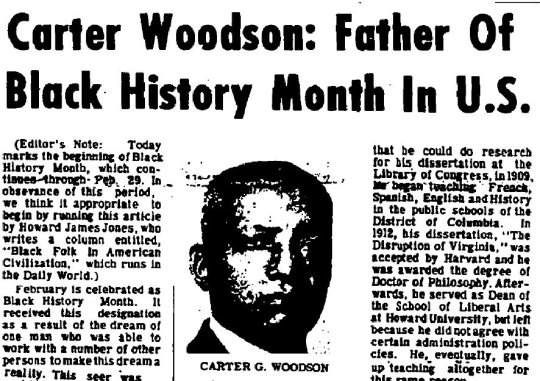
[Image ID: A newspaper clip from 1976. The newspaper clip has three columns of content- the right and left columns are text, and the central column is a picture of Carter G. Woodson’s face with his name as a caption. The title of the article is written across the whole top of the clipping and it reads: “Carter Woodson: Father Of Black History Month In U.S.” The text in both columns reads:
“Editor’s Note: Today marks the beginning of Black History Month, which continues through Feb. 29. In observance of this period, we think it appropriate to begin by running this article by Howard James Jones, who writes a column entitled, “Black Folk In American Civilization”, which runs in the Daily World.
February is celebrated as Black History Month. It received this designation as a result of the dream of one man who was able to work with a number of other persons to make this dream a reality. This seer was that he could do research for his dissertation at the Library of Congress. In 1909, he began teaching French, Spanish, English, and History in the public schools of the District of Columbia. In 1912, his dissertation, “The Disruption of Virginia”, was accepted by Harvard and he was awarded the degree of Doctor of Philosophy. Afterwards, he served as Dean of The School of Liberal Arts at Howard University, but left because he did not agree with certain administration policies. He eventually gave up teaching altogether for this same reason.”
End ID.]
In the summer of 1915, Woodson attended an event which celebrated the 50th anniversary of emancipation. While the event was wildly popular and successful, it also coincided with Woodson being barred from conferences at the AHA, the American History Association. He realized that his goal of celebrating and recording Black history could not be achieved simply working within the framework of the AHA, so in 1915, he founded the Association for the Study of N*gro Life and History, or the ASNLH, which still exists today under the name the Association for the Study of African American Life and History, ASALH.
In 1916, he founded the Journal of N*gro History, which to this day remains a published journal under the name the Journal of African American History. The award-winning journal highlights stories from Black history and offers book reviews as well.
Woodson’s fraternity brothers sided with him when they helped him found N*gro History and Literature Week, later renamed N*gro Achievement Week, in 1924. While it had a significant impact, Woodson was not fully satisfied with it and wanted to go further. So, in February of 1926, he established what would, in 50 years, become Black History Month- N*gro History Week.
Celebrations of N*gro History Week spread rapidly. They popped up all over the USA, and Woodson along with the ASNLH provided annual themes, study materials, and incentives for celebrations. The spread of N*gro History Week was massive. Official celebrations were established by political leaders, and many schools began forming N*gro History clubs.
Woodson’s Concerns-
While Woodson was definitely pleased with the reaction to N*gro History Week, he still had many concerns about it. Although he chose the second week of February to celebrate the week due to many Black communities across America celebrating the birthdays of Abraham Lincoln and Frederick Douglass, both of which occur in the second week of February, he personally disapproved of those celebrations because he believed that they gave to much emphasis to one or two great people, instead of highlighting the history of Black people as a whole.
This concern he brought to N*gro History Week- he worried that people would start only celebrating certain huge figures from Black history instead of celebrating all the Black people from Black history, whether or not they personally made huge advancements, because he believed that the greatness of Black history came not from a few important individuals, but from every single Black American.
Another concern that Woodson had was with the performativity of many N*gro History Week celebrations. He observed that, while many people did genuinely engage in celebrations, many also used it as an opportunity to appear progressive than to actually celebrate Black history. He believed that, if Black history were ever to be truly respected, it must not be confined to a singular week or period of time, but instead must be a constant, never-ceasing pursuit- year-round instead of confined to a time period.
Black History After Woodson-
Rest in power to Carter G. Woodson, who passed away on April 3, 1950.
In the 1950s and 1960s, Woodson’s legacy lived on. The drive to celebrate and commemorate Black history showed up in larger movements for racial change. The Freedom Schools of the South incorporated Black history into their curriculums, Black teachers fought for recognition of Black history within schools, and Woodson’s ASNLH continued to fight for institutional change regarding the celebration of Black history.
In 1976, the first American president officially endorsed February as Black History Month. Every president since has similarly endorsed it. To this day, Black History Month is a thriving celebration, in America and across the world. Although Carter G. Woodson didn’t survive to see the first official celebrations of Black History Month, his legacy lives on through BHM- and so does his call to a genuine commitment to anti-racism and Black history.
Summary/Conclusion/Key Points-
- Carter G. Woodson was a man dedicated to the pursuit of documenting, teaching, learning, and celebrating Black history. He was a teacher, a scholar, and a historian.
- In 1915, Woodson founded the ASNLH to promote independent institutionalization of Black history and its education. The next year, he founded the Journal of N*gro History. Both of these things still exist to this day.
- In 1926, Woodson founded N*gro History Week, which rapidly spread throughout the following decades. It was wildly popular and important, but also raised concerns about performativity.
- Woodson passed away in 1950. After his death, efforts to improve the education about Black history continued, especially in the South with activism from Black teachers.
- In 1976, Black History Month was first celebrated officially across America in February. Woodson’s legacy lives on to this day through BHM.
- While BHM is just a month long, Black history is constant and is not confined to one month of the year. Honor Black history in all you do, not just in February but at any and all opportunities across the whole year.
Sources-
Carter G. WoodsonDr. Carter Godwin Woodson, distinguished Black author, editor, publisher, and historian, recognized for his role in establishing Black HistoNAACP
University of Chicago Press Journals: Cookie absentRCNI COMPANY LIMITED
Origins of Black History Month – ASALH – The Founders of Black History MonthASALH.ORG
Black History MonthFebruary is Black History Month. Paying tribute to the generations of African Americans who struggled with adversity to achieve full citizeBLACKHISTORYMONTH.GOV
52 notes
·
View notes